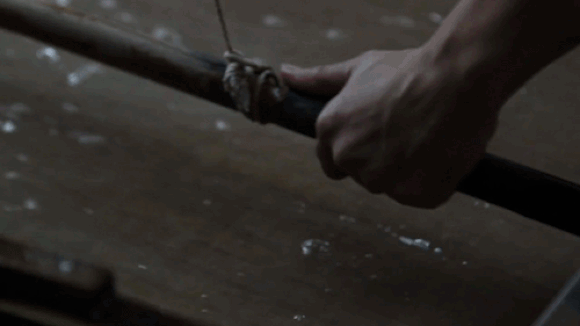
The traditional art of Japanese paper making has a history that dates back well over 1,000 years. Kurotani in Kyoto is one of the oldest paper-making villages where the tradition continues in earnest, with artisans continuing the ancient practice of paper skimming, classed as an intangible cultural asset by Kyoto Prefecture.
Like all Japanese arts, the process of creating washi has a precise and meditative quality about it. From collecting and preparing the raw materials to filtering and pressing the paper, the movements of these craftspeople and the life they lead is truly a sight to behold.
Japanese filmmaker Takashi Kuroyanagi has captured these moments in a beautiful five-minute film that takes us through the process from beginning to end and the result is breathtaking in its meditative beauty. If you’re looking for a way to take five minutes to relax in a busy day, this video is the calming tonic you need.
Japanese handmade paper is known as washi; wa meaning Japanese and shi meaning paper. Kurotani washi is the subject of this film, which is set in winter, the traditional season for paper-making due to the fact that cold inhibits the growth of bacteria and pure, cold water is essential to the process.
From harvesting the field of paper mulberry to stripping the bark and pressing and drying the materials, the film transports us to a slow life where community and quiet meditation lead the way, reminding us to stop and appreciate life and the beauty of creation.
Now it’s time to make yourself a cup of green tea, put your feet up and enjoy five minutes of absolute beauty and relaxation.
If the video has piqued your interest in washi, read on for a look at the steps involved in the production process below.
▼ The kozo (paper mulberry) is indigenous to the south of Japan and is known for its strong fibres. Here the branches are steamed, dried and then stripped for their bark.
▼ The bark strips are then bundled by people of all ages to be cleaned indoors away from the cold. There’s no age discrimination at this workplace!
▼ The bark is shaved, revealing the inner fibres which will be used to make washi.
▼ The fibres are then boiled to remove any starch, fats or tannins.
▼ Then it goes into a bath of cold running water, where impurities are picked out by hand.
▼ The fibres are pounded for an hour in large vats and then a screen is dipped into the paper pulp slurry several times to form a sheet.
▼ Creating the desired thickness of the paper depends on the number of times the screen is dipped into the mix. This is an art that can only be determined by the skilled eye and hands of the craftsman.
▼ The wet sheets of paper are removed from the screen and then stacked to be pressed the following day. The use of string and a binding agent ensures the papers don’t stick together.
▼ Each individual paper is then separated and pasted onto drying boards to dry naturally in the sun.
▼ Finally we get to the paper sheet we see in stores today. The even thickness and fine fibres show the high quality of their product.
Washi is so durable that it can be used for all kinds of things, including lanterns, shoji (sliding paper screens) and fusuma (sliding paper doors). Dyeing opens up even more options for its use.
It’s amazing to think that the heart of this product is actually an all-natural material. Using local water and plants in the process creates something more than just paper—it creates a special bond between artisan and community; a tradition that we hope to see continue for centuries to come.
Source and screenshots: Kuroyanagi Takashi Vimeo

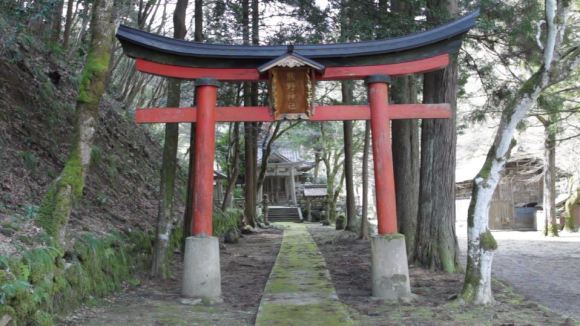
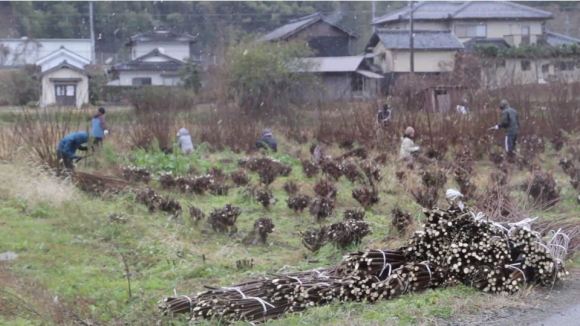
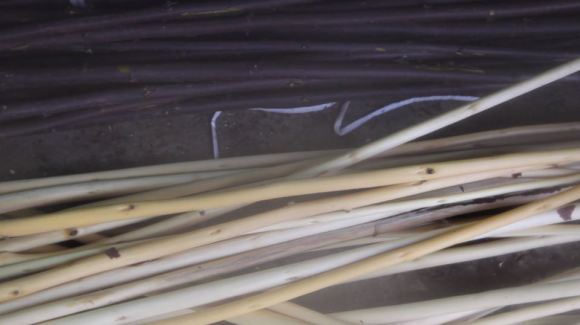
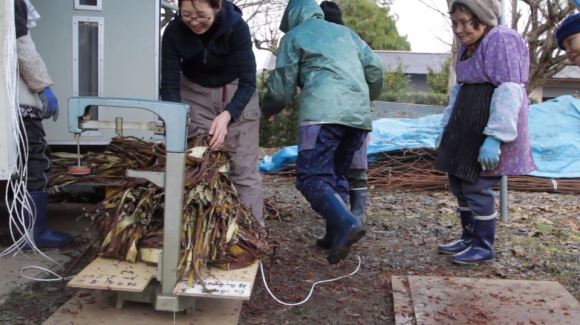
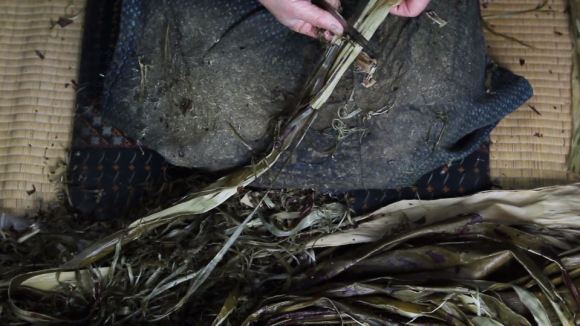
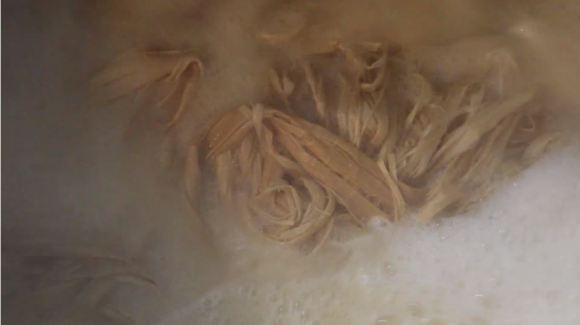
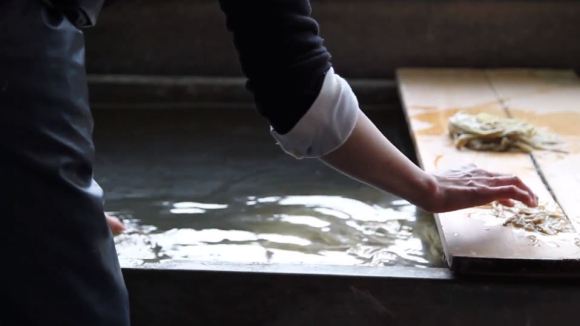
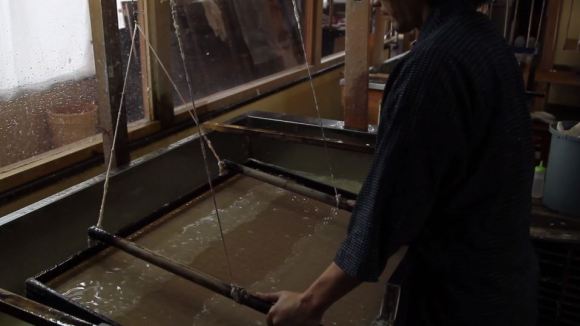
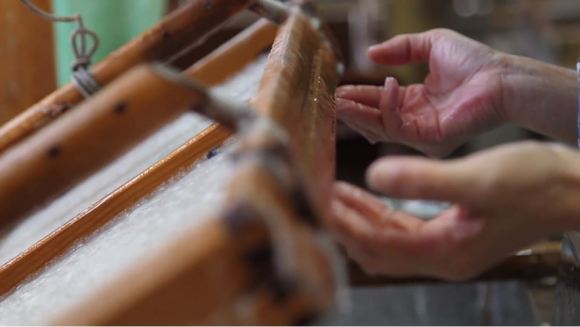
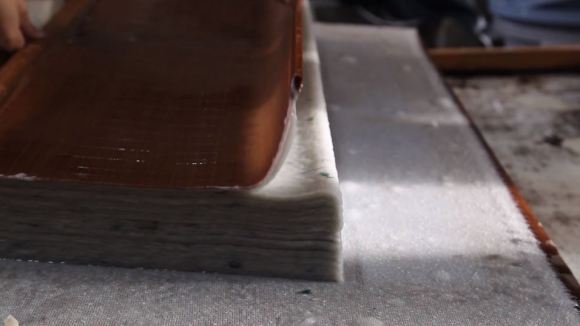
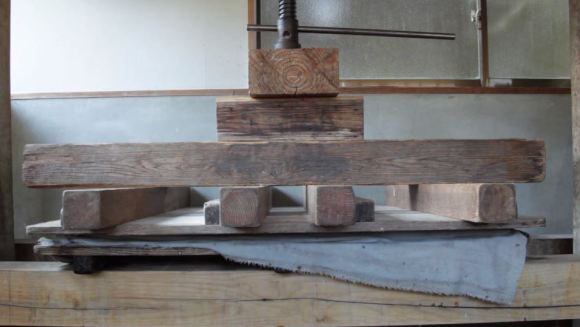
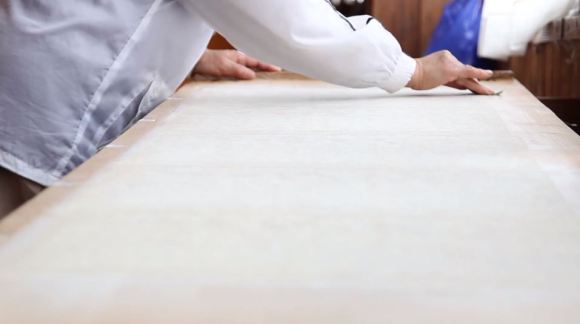
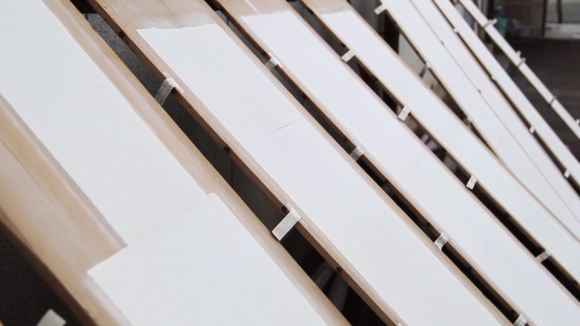
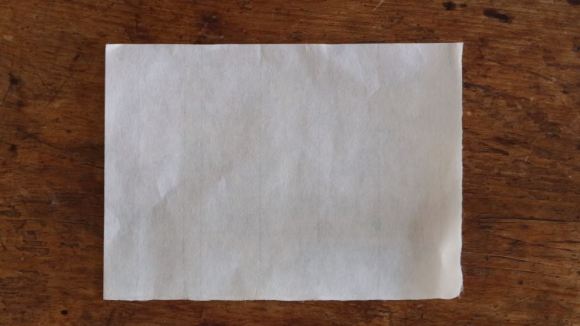
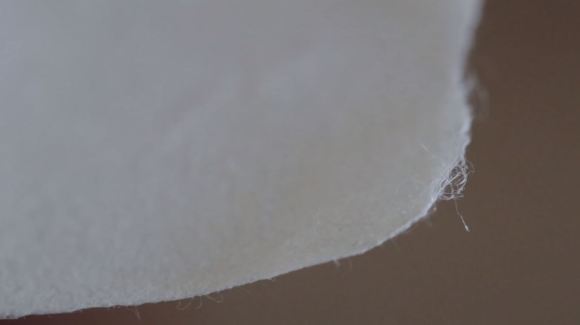
 The surprising and little-known Japanese art of gyotaku: culinary prints made with real fish
The surprising and little-known Japanese art of gyotaku: culinary prints made with real fish Samurai parkas for men feature traditional washi Japanese paper details
Samurai parkas for men feature traditional washi Japanese paper details Kimono artisans hope to revive dying industry by taking kimono to New York Fashion Week
Kimono artisans hope to revive dying industry by taking kimono to New York Fashion Week Traditional Japanese washi paper features Totoro and friends in 20 beautiful seasonal scenes
Traditional Japanese washi paper features Totoro and friends in 20 beautiful seasonal scenes Temple camping in Japan at Wakayama’s Daitaiji【Photos】
Temple camping in Japan at Wakayama’s Daitaiji【Photos】 McDonald’s new Happy Meals offer up cute and practical Sanrio lifestyle goods
McDonald’s new Happy Meals offer up cute and practical Sanrio lifestyle goods More foreign tourists than ever before in history visited Japan last month
More foreign tourists than ever before in history visited Japan last month Starbucks reopens at Shibuya Scramble Crossing with new look and design concept
Starbucks reopens at Shibuya Scramble Crossing with new look and design concept Is the new Shinkansen Train Desk ticket worth it?
Is the new Shinkansen Train Desk ticket worth it? Our reporter takes her 71-year-old mother to a visual kei concert for the first time
Our reporter takes her 71-year-old mother to a visual kei concert for the first time Disney princesses get official manga makeovers for Manga Princess Cafe opening in Tokyo
Disney princesses get official manga makeovers for Manga Princess Cafe opening in Tokyo Dogs now allowed on Catbus! Ghibli Park vehicles revise service animal policy
Dogs now allowed on Catbus! Ghibli Park vehicles revise service animal policy The 5 best Japanese bento to buy at Kyoto Station
The 5 best Japanese bento to buy at Kyoto Station Great deals of Kanagawa lead to the Italian senbero from Shokuhinkan Aoba【Japan’s Best Home Senbero】
Great deals of Kanagawa lead to the Italian senbero from Shokuhinkan Aoba【Japan’s Best Home Senbero】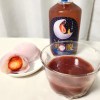 We tried Japan’s Strawberry Daifuku? liqueur, one of three dessert-themed liqueurs
We tried Japan’s Strawberry Daifuku? liqueur, one of three dessert-themed liqueurs We try out “Chan Ramen”, an underground type of ramen popular in the ramen community
We try out “Chan Ramen”, an underground type of ramen popular in the ramen community Foreign English teachers in Japan pick their favorite Japanese-language phrases【Survey】
Foreign English teachers in Japan pick their favorite Japanese-language phrases【Survey】 Beautiful new Final Fantasy T-shirt collection on the way from Uniqlo【Photos】
Beautiful new Final Fantasy T-shirt collection on the way from Uniqlo【Photos】 There’s a park inside Japan where you can also see Japan inside the park
There’s a park inside Japan where you can also see Japan inside the park New Studio Ghibli bedding sets are cool in all senses of the word
New Studio Ghibli bedding sets are cool in all senses of the word Japanese convenience store packs a whole bento into an onigiri rice ball
Japanese convenience store packs a whole bento into an onigiri rice ball Hanton rice — a delicious regional food even most Japanese people don’t know about, but more should
Hanton rice — a delicious regional food even most Japanese people don’t know about, but more should New Pokémon cakes let you eat your way through Pikachu and all the Eevee evolutions
New Pokémon cakes let you eat your way through Pikachu and all the Eevee evolutions Hamburg and Hamburg Shibuya: A Japanese restaurant you need to put on your Tokyo itinerary
Hamburg and Hamburg Shibuya: A Japanese restaurant you need to put on your Tokyo itinerary Studio Ghibli releases Kiki’s Delivery Service chocolate cake pouches in Japan
Studio Ghibli releases Kiki’s Delivery Service chocolate cake pouches in Japan Japan’s bone-breaking and record-breaking roller coaster is permanently shutting down
Japan’s bone-breaking and record-breaking roller coaster is permanently shutting down New definition of “Japanese whiskey” goes into effect to prevent fakes from fooling overseas buyers
New definition of “Japanese whiskey” goes into effect to prevent fakes from fooling overseas buyers Foreign passenger shoves conductor on one of the last full runs for Japan’s Thunderbird train
Foreign passenger shoves conductor on one of the last full runs for Japan’s Thunderbird train Our Japanese reporter visits Costco in the U.S., finds super American and very Japanese things
Our Japanese reporter visits Costco in the U.S., finds super American and very Japanese things Kyoto bans tourists from geisha alleys in Gion, with fines for those who don’t follow rules
Kyoto bans tourists from geisha alleys in Gion, with fines for those who don’t follow rules Studio Ghibli unveils Mother’s Day gift set that captures the love in My Neighbour Totoro
Studio Ghibli unveils Mother’s Day gift set that captures the love in My Neighbour Totoro Domino’s Japan now sells…pizza ears?
Domino’s Japan now sells…pizza ears? New Japanese KitKat flavour stars Sanrio characters, including Hello Kitty
New Japanese KitKat flavour stars Sanrio characters, including Hello Kitty Kyoto creates new for-tourist buses to address overtourism with higher prices, faster rides
Kyoto creates new for-tourist buses to address overtourism with higher prices, faster rides Sales of Japan’s most convenient train ticket/shopping payment cards suspended indefinitely
Sales of Japan’s most convenient train ticket/shopping payment cards suspended indefinitely Sold-out Studio Ghibli desktop humidifiers are back so Totoro can help you through the dry season
Sold-out Studio Ghibli desktop humidifiers are back so Totoro can help you through the dry season Japanese government to make first change to romanization spelling rules since the 1950s
Japanese government to make first change to romanization spelling rules since the 1950s Ghibli founders Toshio Suzuki and Hayao Miyazaki contribute to Japanese whisky Totoro label design
Ghibli founders Toshio Suzuki and Hayao Miyazaki contribute to Japanese whisky Totoro label design Doraemon found buried at sea as scene from 1993 anime becomes real life【Photos】
Doraemon found buried at sea as scene from 1993 anime becomes real life【Photos】 Tokyo’s most famous Starbucks is closed
Tokyo’s most famous Starbucks is closed One Piece characters’ nationalities revealed, but fans have mixed opinions
One Piece characters’ nationalities revealed, but fans have mixed opinions We asked a Uniqlo employee what four things we should buy and their suggestions didn’t disappoint
We asked a Uniqlo employee what four things we should buy and their suggestions didn’t disappoint Princesses, fruits, and blacksmiths: Study reveals the 30 most unusual family names in Japan
Princesses, fruits, and blacksmiths: Study reveals the 30 most unusual family names in Japan Studio Ghibli’s new desktop Howl’s Moving Castle will take your stationery on an adventure
Studio Ghibli’s new desktop Howl’s Moving Castle will take your stationery on an adventure Holy noodles! Japanese restaurant serves up some very unusual udon
Holy noodles! Japanese restaurant serves up some very unusual udon Triumph lingerie company creates sake underwear using fabric made with Japanese rice wine
Triumph lingerie company creates sake underwear using fabric made with Japanese rice wine Enjoy the cherry blossoms under a sakura umbrella
Enjoy the cherry blossoms under a sakura umbrella We visit the breathtaking “House of Light” in the Japanese countryside
We visit the breathtaking “House of Light” in the Japanese countryside Japanese temple and shrine craftsmen now building world’s coolest doghouses, the Inudono【Pics】
Japanese temple and shrine craftsmen now building world’s coolest doghouses, the Inudono【Pics】 “Hyakunen Brush” promises your face a luxurious, tea ceremony-like frothy wash
“Hyakunen Brush” promises your face a luxurious, tea ceremony-like frothy wash Disney meets classic Japan — see your favorite characters reborn as traditional Japanese crafts!
Disney meets classic Japan — see your favorite characters reborn as traditional Japanese crafts! Japanese university student wows Twitter with unique shoji paper sliding door calendar
Japanese university student wows Twitter with unique shoji paper sliding door calendar We try making dried flowers using a special, fast technique and get unexpectedly good results
We try making dried flowers using a special, fast technique and get unexpectedly good results The ancient Japanese textile craft made with jagged fingernails
The ancient Japanese textile craft made with jagged fingernails New sake earrings let you wear your love for Japanese rice wine on your ears
New sake earrings let you wear your love for Japanese rice wine on your ears Young Goku gets turned into adorable limited edition ukiyoe print!
Young Goku gets turned into adorable limited edition ukiyoe print! New hemp mascot character Asamiko-chan appears in Japan
New hemp mascot character Asamiko-chan appears in Japan We travel to Fuji to see how they make Japanese toilet paper
We travel to Fuji to see how they make Japanese toilet paper Narita Airport starts free cultural event series with kimono-wearing, manga creator experiences
Narita Airport starts free cultural event series with kimono-wearing, manga creator experiences
Leave a Reply